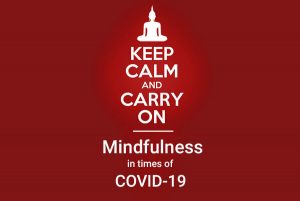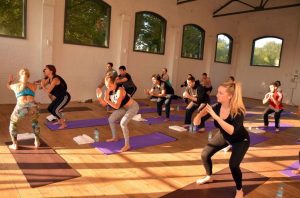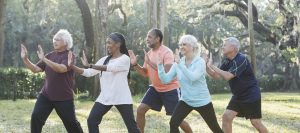Spirituality is Associated with Better Physical and Mental Health
By John M. de Castro, Ph.D.
“Spirituality is a sense of connection to something bigger than ourselves. . . Spirituality also incorporates healthy practices for the mind and body, which positively influences mental health and emotional wellbeing.” – Luna Greestein
Religion and spirituality have been promulgated as solutions to the challenges of life both in a transcendent sense and in a practical sense. What evidence is there that these claims are in fact true? The transcendent claims are untestable with the scientific method. But the practical claims are amenable to scientific analysis. There have been a number of studies of the influence of religiosity and spirituality on the physical and psychological well-being of practitioners mostly showing positive benefits, with spirituality encouraging personal growth and mental health.
In today’s Research News article “Private religion/spirituality, self-rated health, and mental health among US South Asians.” (See summary below or view the full text of the study at: https://www.ncbi.nlm.nih.gov/pmc/articles/PMC7297387/), Kent and colleagues recruited U.S. adults over 40 years of age of south Asian descent. They completed questionnaires on their health, daily spiritual experiences, gratitude, anxiety, anger, religious service attendance, religious affiliation, yoga practice, belief in God, closeness to God, positive religious coping, and divine hope. They were separated into a theistic group who believed in god and a non-theistic group who did not.
They found that in the total sample that the health of the participants was positively related to yoga practice, daily spiritual experiences and gratitude. Emotional functioning was positively related to gratitude and daily spiritual experiences. In addition, anxiety and anger were negatively associated with gratitude and daily spiritual experiences.
In the theistic subsample there were significant positive relationships between health and closeness to god and positive religious coping. There were significant positive relationships between emotional functioning and daily spiritual experiences, closeness to god and positive religious coping and negative relationships with negative religious coping. Anxiety and anger were related to negative religious coping and religious/spiritual struggles.
The results make it clear that religion and spirituality are associated with better physical and mental health. It should be noted that these results are correlational and as such causation cannot be determined. It is equally likely that spirituality promotes mental and physical health, that people with better mental and physical health tend to be more religious and spirituality, or that a third factor is related to both. These results also have limited generalizability as they were obtained from a community sample of people in the U.S. of south Asian descent. They may not apply to other ethnic or religious groups.
Nevertheless, the results present a positive picture of religion and spirituality and its relationships to physical and mental health. Positive religious coping to stress involves the belief that god is guiding the individual for good reasons and this type of coping is associated with better mental health. On the other hand, negative religious coping to stress which involves belief that god is, for some reason, punishing the individual, has negative emotional consequences. So, religion and spirituality are double edged swords depending on how the individual interprets and employs them.
So, spirituality is associated with better physical and mental health.
“positive associations have been found between some styles of religion/spirituality and general wellbeing, marital satisfaction and general psychological functioning.” – Deborah Cornah
CMCS – Center for Mindfulness and Contemplative Studies
This and other Contemplative Studies posts are also available on Google+ https://plus.google.com/106784388191201299496/posts and on Twitter @MindfulResearch
Study Summary
Kent, B. V., Stroope, S., Kanaya, A. M., Zhang, Y., Kandula, N. R., & Shields, A. E. (2020). Private religion/spirituality, self-rated health, and mental health among US South Asians. Quality of life research : an international journal of quality of life aspects of treatment, care and rehabilitation, 29(2), 495–504. https://doi.org/10.1007/s11136-019-02321-7
Abstract
Purpose:
Connections between private religion/spirituality and health have not been assessed among U.S. South Asians. The aim of this study was to examine the relationship between private religion/spirituality and self-rated and mental health in a community-based sample of U.S. South Asians.
Methods:
Data from the Mediators of Atherosclerosis in South Asians Living in America (MASALA) study (collected 2010–2013 and 2015–2018) and the attendant Study on Stress, Spirituality, and Health (n=881) were analyzed using OLS regression. Self-rated health measured overall self-assessed health. Emotional functioning was measured using the Mental Health Inventory-3 index (MHI-3) and Spielberger scales assessed trait anxiety and trait anger. Private religion/spirituality measures included prayer, yoga, belief in God, gratitude, theistic and non-theistic spiritual experiences, closeness to God, positive and negative religious coping, divine hope, and religious/spiritual struggles.
Results:
Yoga, gratitude, non-theistic spiritual experiences, closeness to God, and positive coping were positively associated with self-rated health. Gratitude, non-theistic and theistic spiritual experiences, closeness to God, and positive coping were associated with better emotional functioning; negative coping was associated with poor emotional functioning. Gratitude and non-theistic spiritual experiences were associated with less anxiety; negative coping and religious/spiritual struggles were associated with greater anxiety. Non-theistic spiritual experiences and gratitude were associated with less anger; negative coping and religious/spiritual struggles were associated with greater anger.
Conclusion:
Private religion/spirituality are associated with self-rated and mental health. Opportunities may exist for public health and religious care professionals to leverage existing religion/spirituality for well-being among U.S. South Asians.
https://www.ncbi.nlm.nih.gov/pmc/articles/PMC7297387/









